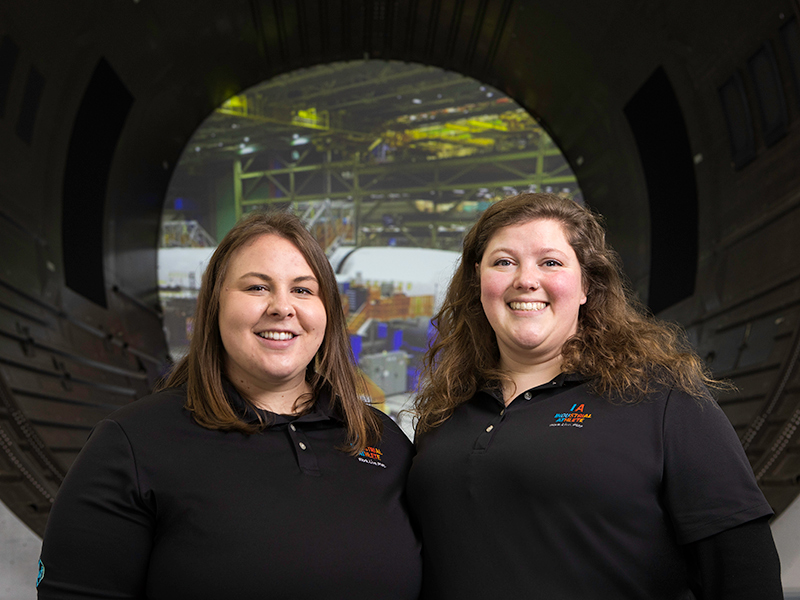Two athletic trainers find joy in helping Boeing workers with physically demanding jobs
July 25, 2023

Dreams can take you in unpredictable directions. Hayley Stout ’18 and Katherine Norris ’20 never expected that their penchant for working with athletes would lead them to careers at Boeing Co. alongside the men and women who build and repair airplanes.
In a twist of fate, Stout and Norris — who each grew up in the Seattle area but didn’t know each other — are today working as athletic trainers for the aerospace giant Boeing. They started their jobs a year apart at the company’s sprawling factory in Everett, Washington, where giant wide-body 777s and 787s are assembled. The site is heralded as the largest manufacturing plant in the world.
Many people imagine that going into a career in athletic training means working on the sidelines of high school and college sports games, tending to athletes’ sore muscles and sprained joints so that they can return to the game.
Before enrolling in the athletic training program at AU, Norris and Stout each thought so too. Little did they know that industrial companies need athletic trainers just as much as professional and school sports teams do.
“It’s not ‘traditional’ athletic training, but the whole reason I wanted to be an athletic trainer was to help people get back to doing the things they love,” said Stout. “And I do that every day here.”
Similar to sports athletes, industrial athletes rely on their physical abilities to perform their jobs. They lift, bend, reach, and push just like basketball or football or volleyball players. And they get injuries, in particular pain and stiffness that builds up over time.
It is up to industrial athletic trainers like Stout and Norris to work with employees who rely on their physical fitness to do their jobs. That means regularly leading warmup exercises for groups of workers before they start their shifts and training employees on how to stay healthy on the job.
Stout and Norris find workers frequently crammed into tight quarters as they affix nuts and bolts in the smallest spaces. Others have their arms above their head as they install wing panels.
“We counsel workers to take little microbreaks with different movements throughout the day,” said Stout. “We teach them to pay attention to posture.”
Norris was home-schooled by her parents in Washington and then ventured to Sugar Grove, Illinois, to live with a brother and take classes in massage therapy at Waubonsee Community College, eventually gaining a license in that specialty. Then she enrolled at AU to finish her degree in athletic training before returning to Washington and going to work at Boeing.
“I am able to make a difference here, and that’s something that is really important to me,” said Norris. “I can help workers with physically demanding jobs feel better and avoid injury, and I can earn a good living too.”
Stout also grew up in Washington before AU recruited her to play softball. She knew she wanted to be an athletic trainer when she was a teenager, and after graduating from AU, returned home to work as an athletic trainer at her former high school before landing her job at Boeing.
Both women are contractors at Boeing through Grand Rapids, Michigan-based Work-Fit, a workforce injury prevention and management firm.
“What brings me the most joy is when my patients tell me they were able to work on a painting for hours at home without any discomfort or get back into their garden for the first time in months or pick up their grandkids or go on a walk with their friends,” said Stout. “Some days I think it’s easy to lose sight of the bigger picture since we only see them at work, but at the end of the day, what we do is very impactful.”
This story is an excerpt from the spring/summer 2023 issue of AU Magazine. Click here to read the full story about six alumni finding purpose and passion.